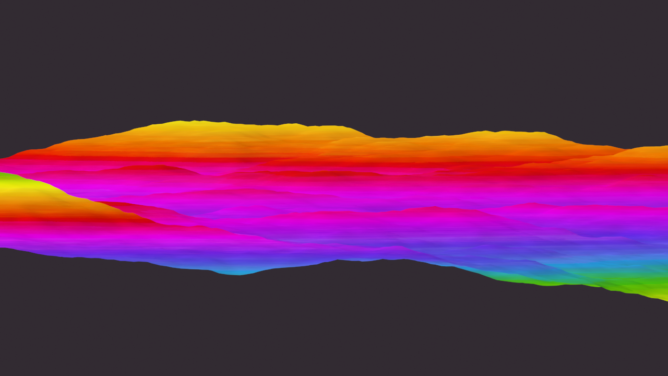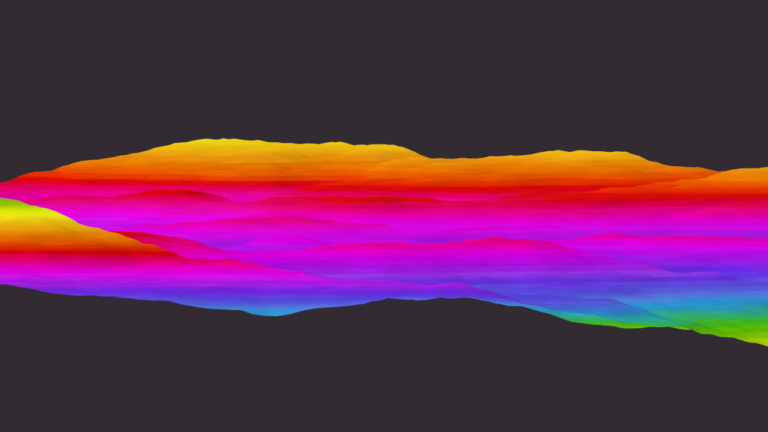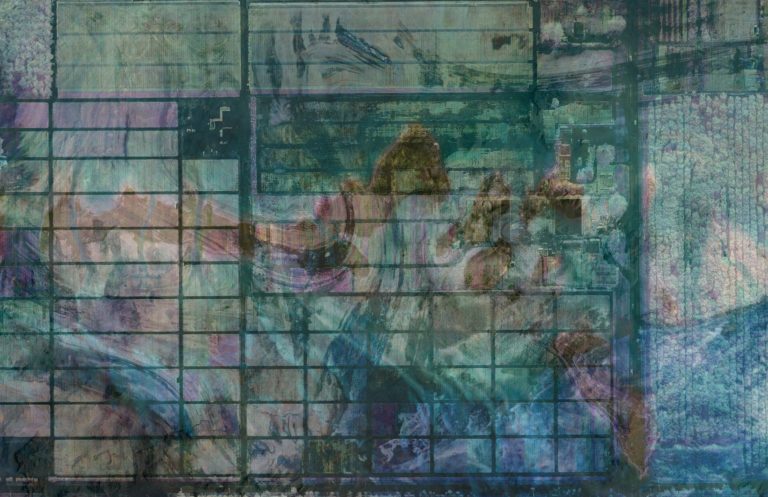This is my contribution to the OBJKT4OBKT2 free art swap (at the Hic et Nunc crypto art NFT market). Since I arrived late, I'll keep it priced free an extra day.
Available at: https://www.hicetnunc.xyz/objkt/48189
Description: Take a 3D plane and subdivide it to small squares. Apply animated noise to it on the Z axis. Take a gradient of maximum chroma and medium lightness colors, similar to a rainbow, and map it to the elevation view of the noisy plane. Then render the animation, and you get something like this. This could be compared to a geographic elevation map, but with color gradients between lines. It could also be compared to a representation of earth layer evolution.
You need a little bit of Tezos–a newfangled eco-friendly cryptocurrency–to cover the tiny transaction fee to collect free art as part of this art swap. You can get Tezos via the Guarda online wallet and other places, and I recommend the Kukai or Temple web wallets. (If you create your wallet in Guarda, export the private key and import it to the web wallets to access it.)
Thanks to @DiverseNftArt for organizing this event (that's a link to their announce tweet).



